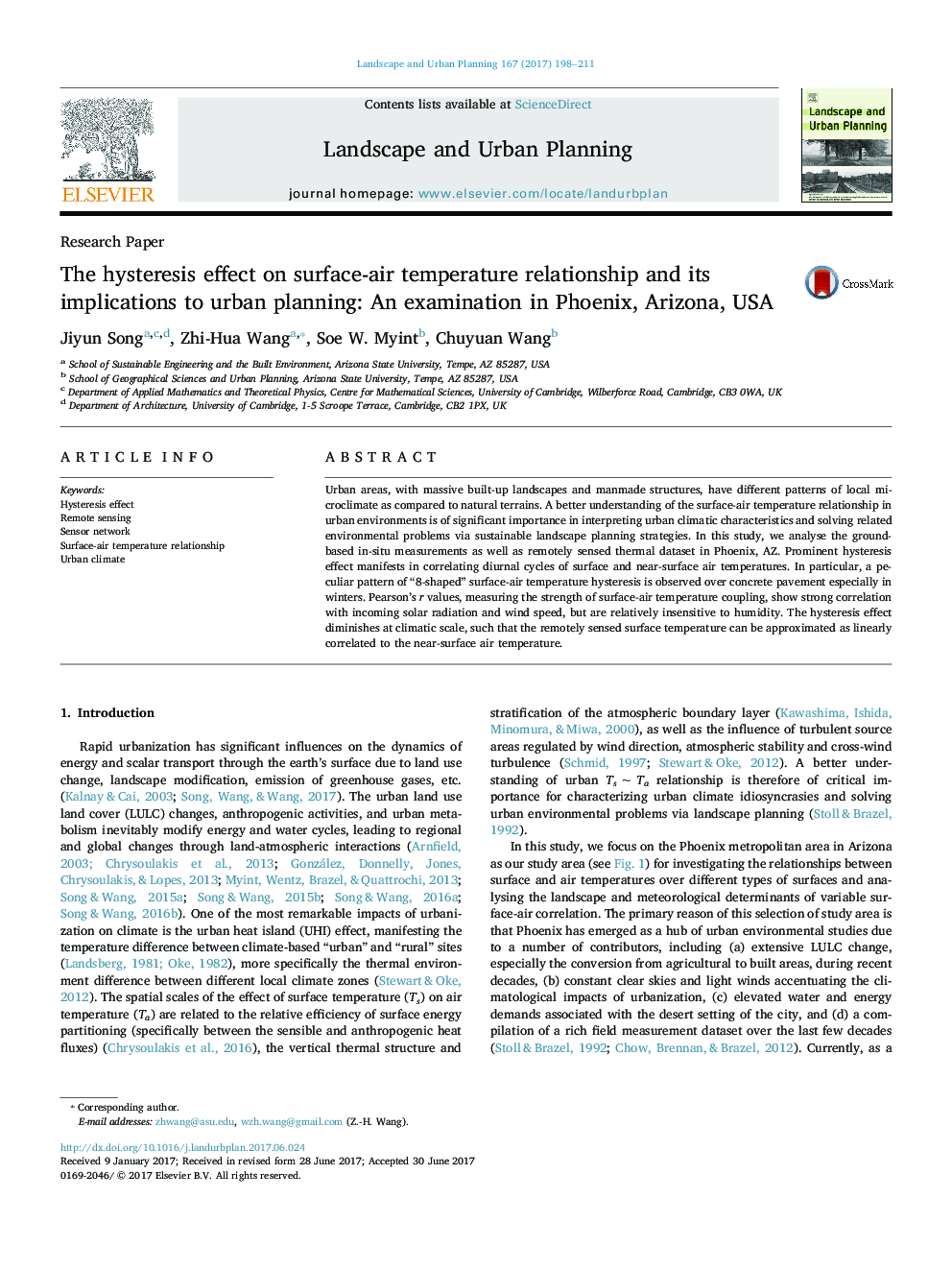| Article ID | Journal | Published Year | Pages | File Type |
|---|---|---|---|---|
| 5114951 | Landscape and Urban Planning | 2017 | 14 Pages |
Abstract
Urban areas, with massive built-up landscapes and manmade structures, have different patterns of local microclimate as compared to natural terrains. A better understanding of the surface-air temperature relationship in urban environments is of significant importance in interpreting urban climatic characteristics and solving related environmental problems via sustainable landscape planning strategies. In this study, we analyse the ground-based in-situ measurements as well as remotely sensed thermal dataset in Phoenix, AZ. Prominent hysteresis effect manifests in correlating diurnal cycles of surface and near-surface air temperatures. In particular, a peculiar pattern of “8-shaped” surface-air temperature hysteresis is observed over concrete pavement especially in winters. Pearson's r values, measuring the strength of surface-air temperature coupling, show strong correlation with incoming solar radiation and wind speed, but are relatively insensitive to humidity. The hysteresis effect diminishes at climatic scale, such that the remotely sensed surface temperature can be approximated as linearly correlated to the near-surface air temperature.
Related Topics
Life Sciences
Agricultural and Biological Sciences
Ecology, Evolution, Behavior and Systematics
Authors
Jiyun Song, Zhi-Hua Wang, Soe W. Myint, Chuyuan Wang,
